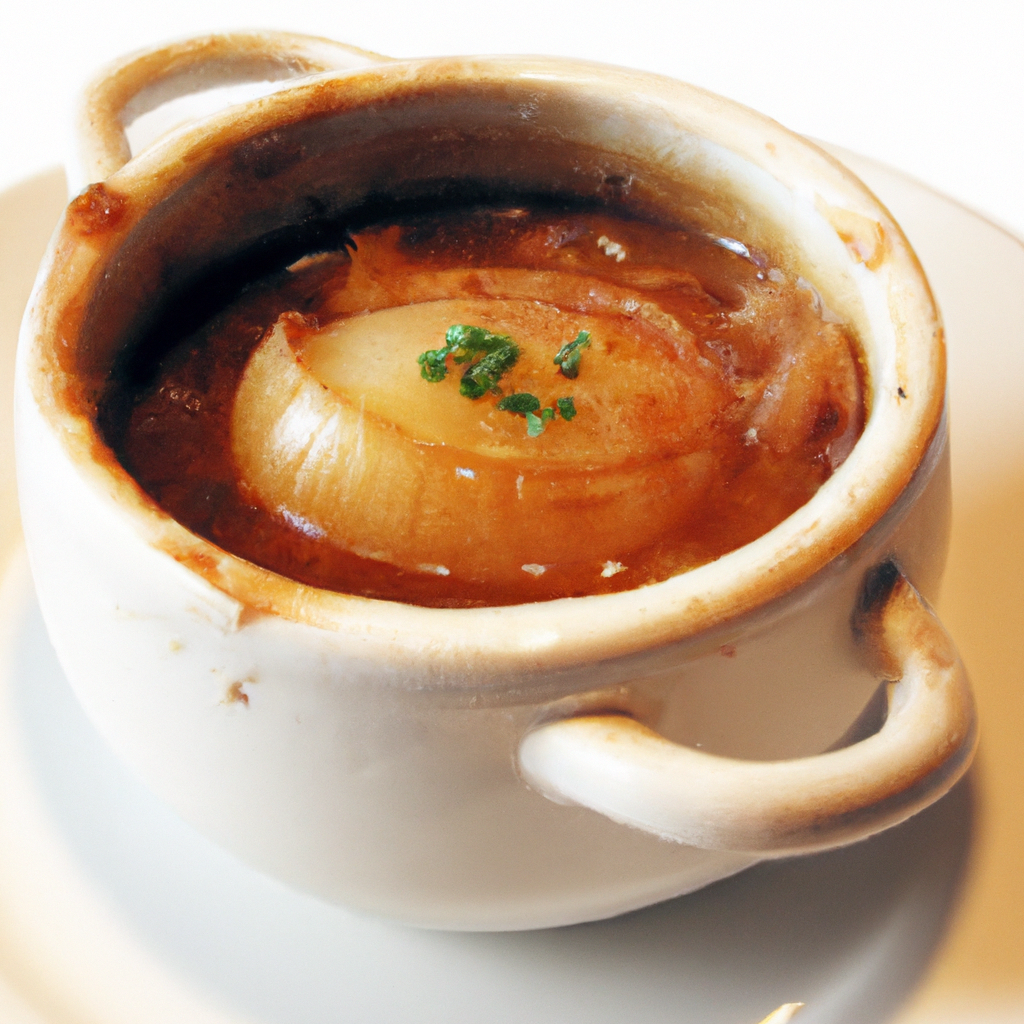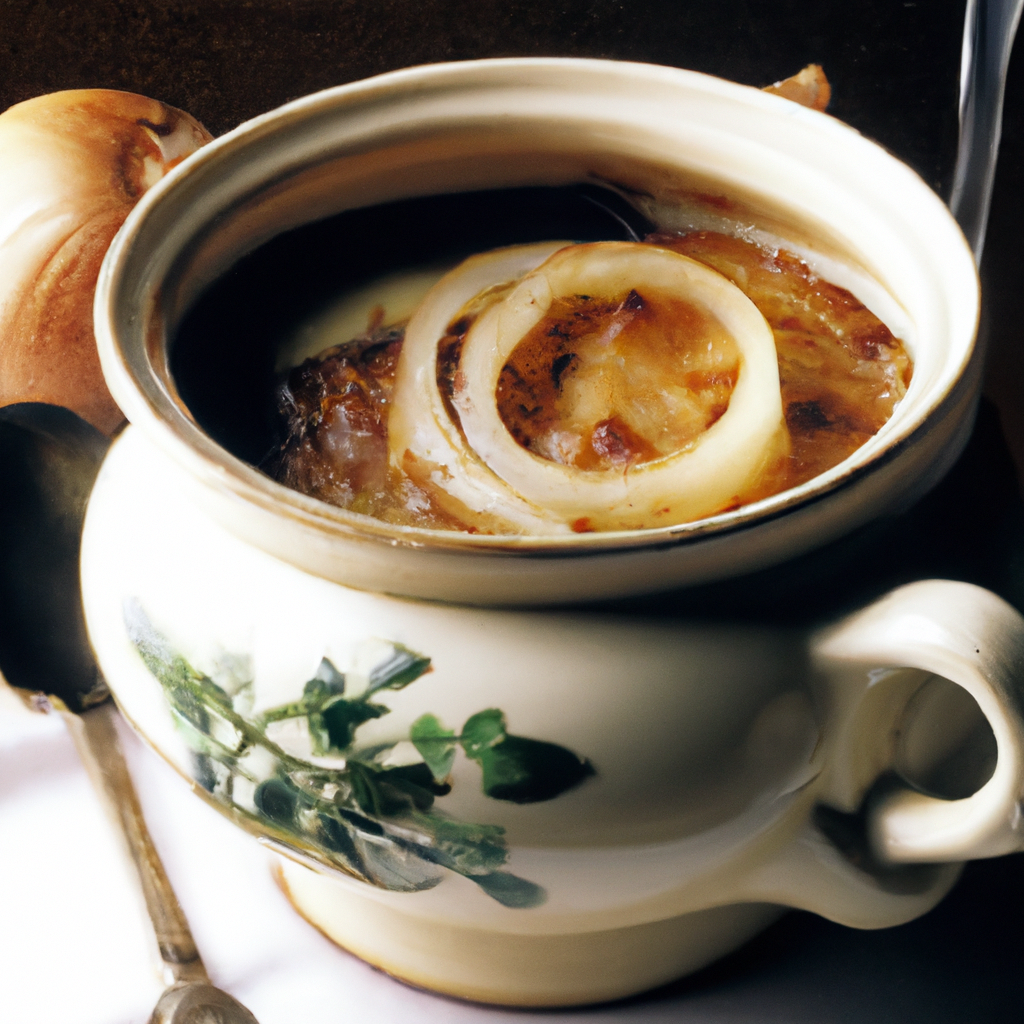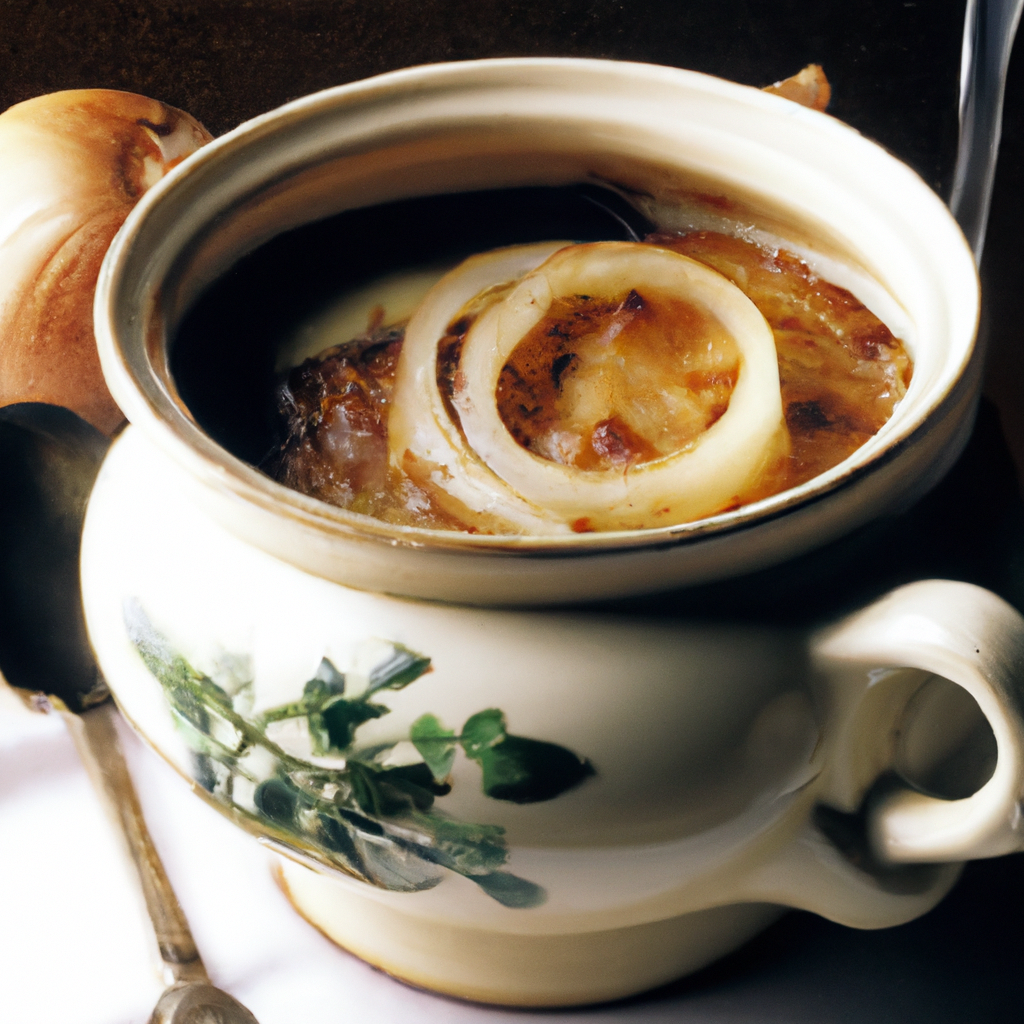Are you a fan of French Onion Soup? Have you ever wondered where this delicious and comforting dish originated? Well, get ready to satisfy your curiosity, because we’re about to take you on a flavorful journey through history. From its humble beginnings to its rise in popularity around the globe, this article will uncover the surprising birthplace of French Onion Soup and reveal the secrets behind its mouthwatering flavors. So, grab a spoon and get ready to dive into the fascinating story of where this beloved soup was invented!
Overview
French Onion Soup is a classic and beloved dish that has stood the test of time. With its rich flavors and hearty ingredients, this soup has become a staple in French cuisine and has gained popularity worldwide. Served with a crusty slice of bread and topped with melted cheese, French Onion Soup is a comforting and satisfying dish that warms both the body and soul. In this article, we will explore the historical background, variations, traditional recipe, and contemporary adaptations of this iconic soup.
Historical Background
Origin of French Onion Soup
French Onion Soup, also known as “Soupe à l’Oignon” in French, traces its roots back to the ancient Roman era. Onions, the star ingredient of this soup, have been cultivated in regions around the Mediterranean for thousands of years. As people began to experiment with the versatile onion, they discovered that when cooked slowly, it transformed into a sweet and rich flavor component. This led to the development of various onion-based dishes, including the precursor to French Onion Soup.

Early French Culinary Influences
Ancient Roman Influence
During the Roman Empire, the Gauls, who lived in what is now present-day France, were introduced to onions and their various culinary applications. The Romans brought with them cooking techniques and ingredients that greatly influenced Gallic cuisine, including the use of onions as a flavor base. This early influence laid the foundation for the development of French Onion Soup in the centuries to come.
Medieval Era Influence
In the medieval era, French cuisine evolved significantly, thanks in part to the influences of trade, exploration, and the Crusades. Various spices, herbs, and cooking techniques were introduced, further enhancing the flavor profiles of dishes. Onions remained a staple ingredient, and their importance in French cooking continued to grow. Although the exact origins of French Onion Soup during this time are unclear, the prevalence of onions in medieval recipes suggests that the dish was already well-established.
Renaissance Cuisine
The Renaissance period in France brought about a flourishing of culinary arts. With the rise of French courts and the wealth of the noble class, food became a form of entertainment and a way to display one’s social status. French chefs embraced new cooking techniques and embarked on culinary exploration. While French Onion Soup may have undergone some refinement during this period, its popularity remained strong, especially among the common people.
Ingredients and Preparation
Onions
The key ingredient in French Onion Soup is, of course, onions. Traditionally, yellow onions are used for their mild and sweet flavor when caramelized. Sliced or chopped onions are cooked slowly in butter or oil until they become soft and golden brown. This process takes time and patience but greatly enhances the depth of flavor in the soup.
Beef Broth
Beef broth forms the base of French Onion Soup, providing a rich and savory flavor. A homemade broth is preferred, as it allows for more control over the seasoning and depth of flavor. The broth is made by simmering beef bones, onions, carrots, celery, and various herbs and spices for several hours. The strained broth is then ready to be incorporated into the soup.
Cheese
One of the defining characteristics of French Onion Soup is the melted cheese that forms a deliciously gooey and golden crust on top. Gruyère cheese is traditionally used, as it has a nutty and slightly sweet flavor that complements the soup perfectly. The cheese is grated and generously sprinkled on the soup just before it goes under the broiler, creating a heavenly cheese pull that is adored by soup enthusiasts.
Bread
To complete the dish, a slice of crusty bread is placed on top of the soup before the cheese is added. The bread not only provides a delightful texture contrast but also acts as a sponge to soak up the flavors of the soup. It is best to use a baguette or a similar type of French bread, which is crisp on the outside and soft on the inside.

Regional Variations
Lyonnaise
The city of Lyon in France is renowned for its gastronomic heritage, and French Onion Soup is no exception. In the Lyonnaise variation, the soup is made with a combination of white onions and shallots, giving it a slightly sweeter and milder flavor. Additionally, a splash of white wine is added to the broth, further enhancing the taste.
Parisienne
In the capital city of Paris, French Onion Soup takes on a more refined and elegant twist. The soup base is often made with a blend of different onions, such as white, yellow, and red, to create a complex flavor profile. Additionally, a touch of brandy is added to the soup, imparting a subtle richness that elevates the dish.
Alsatian
In the northeastern region of Alsace, which has a strong culinary influence from both France and Germany, French Onion Soup takes on a unique character. Instead of the traditional beef broth, Alsatian Onion Soup uses a combination of beef and chicken broth, creating a lighter and more delicate flavor. The cheese topping is typically a combination of Gruyère and Emmental, giving the soup a distinctively Alsatian twist.
Popularization of French Onion Soup
Influence of French Revolution
One significant event in French history that helped popularize French Onion Soup was the French Revolution. During this period of political and social upheaval, the soup became a symbol of the common people’s resilience and resourcefulness. Onions were cheap and plentiful, making them a staple in the diet of the lower classes. French Onion Soup became a comforting and nourishing dish, enjoyed by all strata of society.
20th Century Popularity
In the 20th century, French Onion Soup gained international recognition and popularity. French cuisine experienced a revival, drawing attention from food enthusiasts, chefs, and travelers alike. French restaurants around the world began featuring this humble soup on their menus, and it became an iconic representation of French cooking. Its simple yet satisfying flavors resonated with people across cultures, cementing its status as a culinary classic.
Traditional French Onion Soup Recipe
Ingredients:
- 4 large yellow onions, thinly sliced
- 4 tablespoons unsalted butter
- 2 tablespoons olive oil
- 2 cloves garlic, minced
- 1 tablespoon all-purpose flour
- 6 cups beef broth
- 1 bay leaf
- 1 teaspoon thyme leaves
- Salt and pepper to taste
- 8 slices of baguette
- 2 cups grated Gruyère cheese
Instructions:
-
In a large pot, melt the butter and heat the olive oil over medium heat. Add the sliced onions and cook, stirring occasionally, until they become soft and caramelized, approximately 30-40 minutes.
-
Add the minced garlic and cook for an additional 1-2 minutes, until fragrant.
-
Sprinkle the flour over the onions and garlic, and stir well to coat the onions evenly.
-
Slowly pour in the beef broth while stirring constantly, ensuring that the flour is well incorporated with the liquid. Add the bay leaf and thyme leaves, then season with salt and pepper to taste.
-
Reduce the heat to low and let the soup simmer for 20-30 minutes, allowing the flavors to meld together.
-
Preheat the broiler in your oven. Toast the slices of baguette until they are lightly golden brown.
-
Ladle the soup into oven-safe bowls, then place a slice of toasted baguette on top of each bowl.
-
Sprinkle a generous amount of grated Gruyère cheese over the bread, ensuring that it covers the surface of the soup.
-
Place the bowls on a baking sheet and broil for 3-5 minutes, or until the cheese is melted and bubbly, with a golden brown crust.
-
Carefully remove the bowls from the oven and let cool for a few minutes before serving. Enjoy the warm and comforting flavors of traditional French Onion Soup!
Celebrations and Associations
National French Onion Soup Day
French Onion Soup has garnered such widespread love and appreciation that it even has its own special day. National French Onion Soup Day is celebrated every year on March 13th, giving soup enthusiasts a chance to indulge in this delicious dish and honor its cultural significance. It is a day to come together, share recipes, and enjoy the soul-warming comfort that French Onion Soup brings.
French Onion Soup Festival
For a truly immersive French Onion Soup experience, the town of Mantes-la-Jolie in France hosts an annual French Onion Soup Festival. This unique culinary event celebrates the soup in all its glory, featuring cooking demonstrations, tastings, and a range of vendors offering their own variations of the classic dish. The festival is a testament to the enduring popularity and cultural significance of French Onion Soup.
Iconic Restaurants Known for French Onion Soup
Les Halles
Located in Paris, Les Halles was once a bustling marketplace and is now home to a renowned restaurant that pays homage to traditional French cuisine. Les Halles serves a classic French Onion Soup that has gained a loyal following. With its authentic flavors and cozy ambiance, the restaurant offers a true taste of France.
La Soupe à l’Oignon
La Soupe à l’Oignon, located in Lyon, is a charming and cozy restaurant that specializes in French Onion Soup. With its focus on the Lyonnaise variation, this establishment serves up a deliciously sweet and aromatic version of the soup that is loved by locals and visitors alike.
Au Pied de Cochon
Au Pied de Cochon, situated in the heart of Paris, is a historic brasserie known for its traditional French cuisine. This iconic restaurant serves a hearty and flavorful French Onion Soup that has been a staple on its menu for decades. The combination of superb ingredients and expert preparation makes Au Pied de Cochon a must-visit for soup connoisseurs.
Contemporary Adaptations and Fusion Cuisine
Globally Influenced Variations
In recent years, French Onion Soup has undergone various creative reinterpretations and adaptations around the world. Chefs from different culinary backgrounds have added their own twists to the classic dish, incorporating local ingredients and flavors. From Asian-inspired versions with miso broth and scallions to Mexican variations with smoky chipotle peppers, these global interpretations showcase the versatility and adaptability of French Onion Soup.
Vegan and Gluten-Free Alternatives
With the rising popularity of vegan and gluten-free diets, chefs and food enthusiasts have developed alternative versions of French Onion Soup to cater to dietary restrictions. Vegan variations often use vegetable broth and substitute the cheese with plant-based alternatives, while gluten-free adaptations replace the traditional bread with gluten-free alternatives. These alternatives allow individuals with dietary preferences or restrictions to enjoy the flavors of French Onion Soup without compromise.
French Onion Soup, with its rich history, regional variations, and diverse adaptations, continues to captivate palates around the world. Whether enjoyed on a cold winter’s day or as a comforting meal any time of the year, this beloved soup remains a testament to the timeless appeal of French cuisine. So, next time you’re in the mood for a bowl of warmth and flavor, indulge in the magic of French Onion Soup and savor every spoonful.
